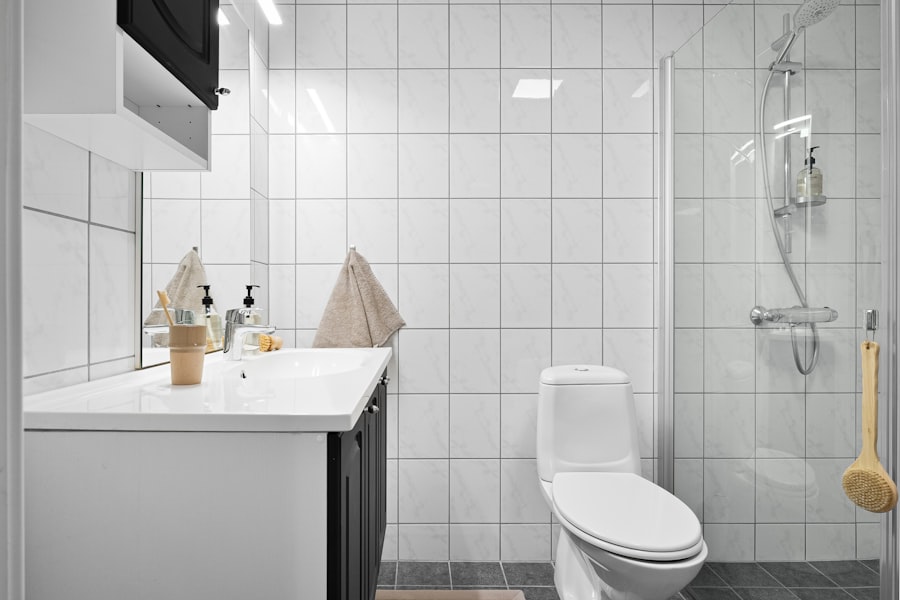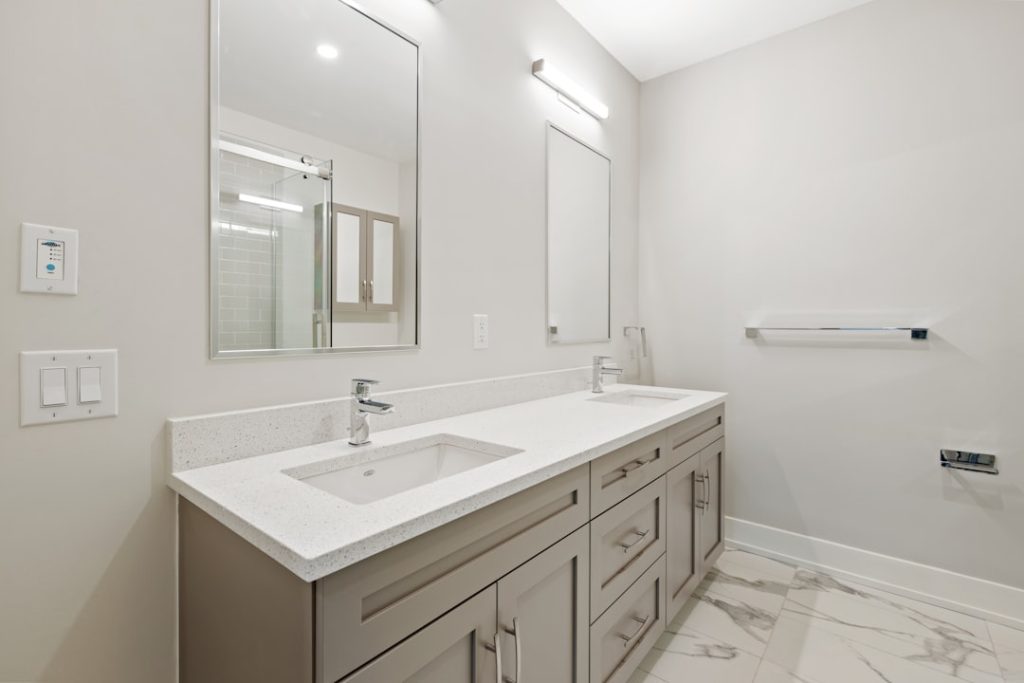When embarking on a bathroom remodel, the first step is to clearly define the scope of the project. This involves determining what aspects of the bathroom will be updated or changed. A comprehensive understanding of the scope not only helps in planning but also sets the stage for budgeting and timelines.
For instance, a simple cosmetic update may involve changing fixtures, repainting walls, and updating accessories, while a more extensive remodel could include altering the layout, replacing plumbing, or even expanding the space. Each of these choices carries different implications for cost and complexity. Moreover, understanding the scope also means considering the functionality of the bathroom.
Is it primarily a guest bathroom, or is it a master suite that requires more luxurious finishes? The intended use will influence decisions about materials and design elements. For example, a family bathroom may prioritize durability and ease of cleaning, while a spa-like master bath might focus on aesthetics and comfort.
By clearly defining the scope, homeowners can create a vision that aligns with their needs and preferences, ensuring that every decision made during the remodel contributes to that overarching goal.
Key Takeaways
- Understanding the scope of the project is crucial for a successful bathroom remodel.
- Setting a realistic budget is essential to avoid overspending during the project.
- Factors such as the size of the bathroom, materials used, and labor costs can affect the overall cost of the remodel.
- Estimating the cost of materials and labor is important for budgeting purposes.
- Hidden costs such as permits, disposal fees, and unexpected repairs should be considered when planning a bathroom remodel.
Setting a Realistic Budget
Once the scope of the project is established, setting a realistic budget becomes paramount. A well-thought-out budget serves as a financial roadmap for the entire remodeling process. It should encompass all anticipated costs, including materials, labor, permits, and any unexpected expenses that may arise.
Homeowners should begin by researching average costs for various elements of a bathroom remodel in their area, as prices can vary significantly based on location and market conditions. In addition to direct costs, it’s wise to allocate a contingency fund—typically around 10-20% of the total budget—to cover unforeseen expenses. This could include anything from discovering water damage behind walls to needing additional electrical work.
By preparing for these potential surprises, homeowners can avoid financial strain and ensure that their project stays on track. A realistic budget not only helps in managing costs but also provides peace of mind throughout the remodeling process.
Factors Affecting the Cost of a Bathroom Remodel

Several factors can significantly influence the overall cost of a bathroom remodel. One of the most prominent is the size of the bathroom itself; larger spaces naturally require more materials and labor, which can drive up costs. Additionally, the complexity of the design plays a crucial role.
A straightforward remodel with minimal changes will generally be less expensive than one that involves intricate tile work or custom cabinetry. Another critical factor is the choice of materials. High-end finishes such as marble countertops or designer fixtures can substantially increase costs compared to more budget-friendly options like laminate or standard faucets.
Furthermore, labor costs can vary based on geographic location and the expertise required for specific tasks. For instance, hiring a licensed plumber or electrician will typically incur higher fees than general laborers due to their specialized skills. Understanding these factors allows homeowners to make informed decisions that align with their budget while still achieving their desired aesthetic.
Estimating the Cost of Materials and Labor
| Item | Material Cost | Labor Cost |
|---|---|---|
| Concrete | 500 | 800 |
| Wood | 300 | 600 |
| Steel | 700 | 1000 |
Estimating the cost of materials and labor is a crucial step in any bathroom remodel. Homeowners should begin by creating a detailed list of all necessary materials, including tiles, fixtures, cabinetry, and paint. Each item should be researched for pricing at local suppliers or online retailers to get an accurate estimate.
For example, ceramic tiles may range from $1 to $15 per square foot depending on quality and design, while vanities can vary widely from $200 to over $2,000 based on size and material. Labor costs can be more challenging to estimate since they depend on local rates and the specific tasks involved in the remodel. It’s advisable to obtain multiple quotes from contractors to ensure competitive pricing.
Many contractors charge by the hour or provide a flat rate for specific jobs, such as installing plumbing or tiling floors. Homeowners should also consider whether they need to hire specialists for certain tasks, such as electricians for lighting installations or plumbers for fixture replacements, as these additional costs can add up quickly.
Hidden Costs to Consider
In any remodeling project, hidden costs can often catch homeowners off guard if they are not adequately prepared. One common hidden cost is related to structural issues that may arise during demolition or renovation. For instance, if walls are opened up during the remodel, it may reveal outdated plumbing or electrical systems that need upgrading to meet current codes.
This can lead to unexpected expenses that were not initially accounted for in the budget. Another hidden cost can stem from permits and inspections required by local building authorities. Depending on the extent of the remodel, homeowners may need to secure permits for plumbing, electrical work, or structural changes.
These permits often come with fees that can vary widely based on location and project scope. Additionally, if a homeowner plans to sell their home in the future, they may need to consider how their remodel will affect property value and whether it meets local real estate standards.
Ways to Save Money on a Bathroom Remodel

There are numerous strategies homeowners can employ to save money during a bathroom remodel without sacrificing quality or aesthetics. One effective approach is to focus on cosmetic updates rather than complete overhauls. For example, instead of replacing an entire bathtub, refinishing it can provide a fresh look at a fraction of the cost.
Similarly, painting existing cabinetry rather than replacing it can yield significant savings while still achieving an updated appearance. Another way to cut costs is by shopping sales and discounts for materials and fixtures. Many home improvement stores offer seasonal sales or clearance items that can provide substantial savings on tiles, faucets, and other essentials.
Additionally, considering alternative materials can also lead to cost reductions; for instance, opting for quartz countertops instead of natural stone can provide a similar aesthetic at a lower price point. By being resourceful and flexible with choices, homeowners can achieve their desired results while staying within budget.
Deciding whether to hire a professional or tackle a bathroom remodel as a DIY project is a significant consideration that impacts both cost and outcome. Hiring professionals brings expertise and experience to the table; they are familiar with local building codes and best practices that ensure quality workmanship. For complex tasks such as plumbing or electrical work, hiring licensed professionals is often necessary for safety and compliance reasons.
On the other hand, DIY projects can offer substantial savings if homeowners possess the necessary skills and tools. Simple tasks like painting walls or installing new fixtures can be manageable for those with some experience in home improvement. However, it’s essential to realistically assess one’s capabilities; attempting complex tasks without adequate knowledge can lead to costly mistakes that may require professional intervention later on.
Ultimately, striking a balance between professional help and DIY efforts can optimize both budget and results.
Tips for Managing the Cost of a Bathroom Remodel
Managing costs effectively throughout a bathroom remodel requires careful planning and ongoing oversight. One key tip is to maintain open communication with contractors if hired; regular check-ins can help ensure that the project stays on schedule and within budget while allowing for adjustments as needed. Establishing clear expectations from the outset regarding timelines and costs can prevent misunderstandings later in the process.
Additionally, keeping detailed records of all expenses incurred during the remodel is crucial for tracking spending against the budget. This includes saving receipts for materials purchased and invoices from contractors. By regularly reviewing these records, homeowners can identify areas where they may be overspending and make necessary adjustments before it becomes an issue.
Furthermore, being flexible with design choices—such as selecting alternative materials or finishes—can help manage costs without compromising on style or functionality. In conclusion, navigating a bathroom remodel involves multiple considerations ranging from understanding project scope to managing costs effectively throughout the process. By taking a strategic approach to budgeting and planning while remaining adaptable in decision-making, homeowners can achieve their desired outcomes while minimizing financial strain.



